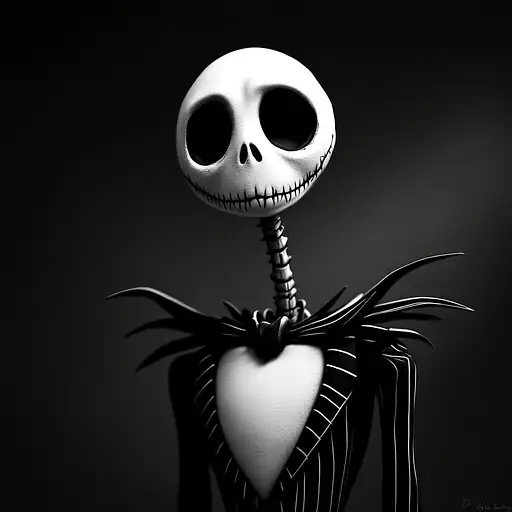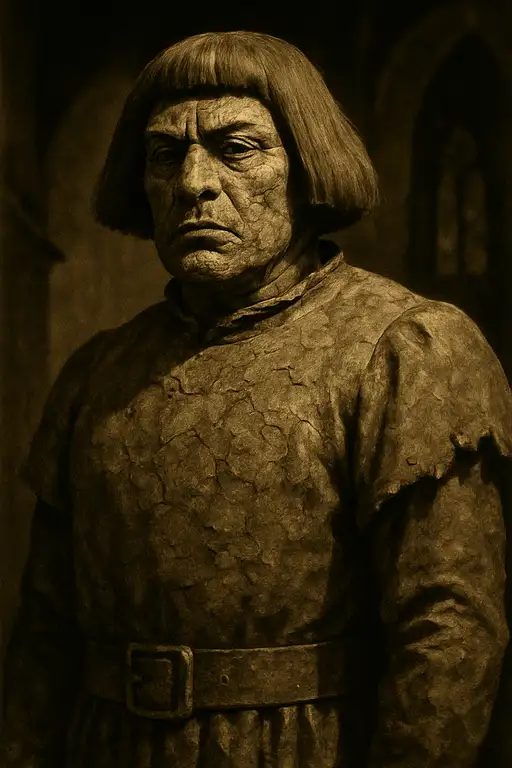
8 months ago
Imagine Jack Skellington, the Pumpkin King, rendered in a striking black-and-white theme, emphasizing his skeletal elegance and eerie charm. In this monochromatic vision, his tall, thin frame stands out in sharp contrast against the shadowed background, his skeleton's every bone sharply defined, casting crisp, angular shadows across his form. His skull, a pale, almost ghostly white, is stark against the darkened shadows, with deep, hollow eye sockets that seem to pierce through the gloom. The bones are smooth and polished, reflecting a slight sheen in the dim light, giving him a slightly ethereal, almost ghost-like appearance. His bony expression is a mixture of melancholy and curiosity, with his thin, elongated mouth curled into a faint smile, revealing his toothless grin. The details of his skull are beautifully intricate, with subtle cracks and markings etched into the bone, adding a sense of age and mystery. His suit, typically striped, now appears as a perfect contrast of black and white, its sharp, jagged lines running vertically down his body like a visual echo of his skeleton’s structure. The fabric seems impossibly crisp, the stripes alternating between pure black and stark white, each line adding to the illusion of depth and texture. His bowtie, always a distinctive feature, is also in high contrast—deep black, like a shadow, against the whiteness of his chest. It is both whimsical and slightly ominous, with its soft, flowing ribbons resembling the kind of detail that gives the figure an almost surreal elegance. The background around him is a dark, swirling fog of shadows, with faint hints of jagged, ghostly shapes that suggest the eerie environment of Halloween Town. The lack of color adds a haunting depth, with the only real light being the soft, spectral glow that catches the edges of his bones, creating sharp, luminous highlights that stand out from the enveloping darkness. His hands, long and delicate with bony fingers, are positioned as if he's about to gesture or conjure some fantastical creation, each finger bending with a fluidity that contrasts with the rigidness of his skeletal body. The details of his hands—thin and almost graceful—are captured in sharp relief, with every joint, every curve visible in the soft light. This black-and-white rendering of Jack Skellington enhances the inherent drama and mystery of his character, drawing attention to the clean lines of his skeletal structure and his slightly macabre yet charismatic presence. The lack of color emphasizes the purity of his form and the timeless, haunting essence he embodies. Every shadow and highlight creates a sense of depth, making him feel like a figure who belongs to both the worlds of the living and the dead, forever suspended in an eerie, dreamlike state 8k
